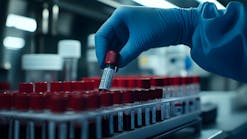Researchers at Albert Einstein College of Medicine of Yeshiva University have discovered how the protein that blocks HIV-1 from multiplying in white blood cells is regulated. The discovery could lead to novel approaches for addressing HIV-1 “in hiding” – namely eliminating reservoirs of HIV-1 that persist in patients undergoing antiretroviral therapy. The study was published in the online edition of the journal Cell Host & Microbe.
Antiretroviral therapy can reduce blood levels of HIV-1 until they are undetectable. But despite drug therapy, reservoirs of HIV-1 can persist in several types of white cells, notably macrophages.
“If you stop antiretroviral therapy, the virus emerges from these reservoirs and returns to the general circulation in a matter of days, as if the patient had never been treated,” says senior author Felipe Diaz-Griffero, PhD. “Now we know the protein that we need to control, so we can prevent HIV-1 reservoirs from forming or eliminate them entirely.”
Scientists have known that a protein called SAMHD1 prevents HIV-1 from replicating in certain immune cells. But it has not been understood why SAMHD1 fails to function in immune cells like macrophages that are vulnerable to HIV-1 infection.
Using mass spectrometry, a tool for determining molecular composition, researchers found that SAMHD1 can exist in two configurations—phosphorylated and unphosphorylated. When SAMHD1 is phosphorylated, as in immune cells that divide, the cell is not protected from being infected with HIV-1. When the protein is not phosphorylated, as occurs in the non-dividing macrophages, the cell is protected. Read the study.





